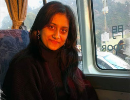
Educational Reforms in Pakistan: Progress and Hurdles
Education is often referred to as the cornerstone of a nation’s development. In Pakistan, like many other countries, the state of education has long been a matter of concern. Educational reforms in Pakistan have been a subject of discussion and debate for many years. The nation recognizes the significance of improving its education system to foster a brighter future. While the country has made significant strides in recent years to reform its education system, it still faces many challenges on the path to providing quality education for all. This article will examine the progress and hurdles of educational reforms in Pakistan.
Progress in Educational Reforms
1- Improvement in Enrollment Rates
In recent years, Pakistan has made significant strides in increasing enrollment rates. Government initiatives and awareness campaigns have led to a higher number of children attending school, especially in rural areas. According to data from the Pakistan Education Statistics, net primary enrollment increased from 42% in 2000-2001 to 57% in 2019-2020. This indicates a positive trend in improving access to education.
2- Focus on Girls’ Education
Pakistan has placed a greater emphasis on girls’ education in recent years. The Benazir Income Support Program and other initiatives have provided incentives for families to send their daughters to school. The Female Literacy Rate has improved from 36% in 2001 to 54% in 2019, according to UNICEF.
3- Curriculum Development
One of the key aspects of educational reform is curriculum development. Pakistan has been working on modernizing its curriculum to meet global standards and provide a more well-rounded education.
The introduction of a National Curriculum has been a major step towards standardizing education across the country. The aim was to provide students with a consistent and well-rounded education, irrespective of their geographical location.
4- Increased Investment
Pakistan’s government has been increasing its budget allocation for education. According to the Pakistan Economic Survey 2020-21, the education sector received 2.6% of the GDP, a modest increase from previous years. This indicates the government’s commitment to improving the education system.
5- Teacher Training Programs
Efforts to improve teacher training programs have been ongoing. Well-trained and motivated teachers are essential for a quality education system.
Hurdles in Educational Reforms
1- Quality of Education
Despite the increase in enrollment, the quality of education in Pakistan remains a significant concern. A substantial number of children complete primary education without acquiring basic literacy and numeracy skills. The Annual Status of Education Report (ASER) 2022 reported that 33% of children in grade 5 could not read a sentence in Urdu or their regional language.
2- Gender Disparities
While efforts have been made to promote girls’ education, significant gender disparities persist in Pakistan’s educational landscape. Many girls still face barriers to attending school, including cultural norms and security concerns, particularly in rural areas.
3- Infrastructure and Facilities
Insufficient infrastructure, a lack of proper facilities, and a shortage of qualified teachers continue to hinder the education system. In many parts of the country, schools lack basic amenities such as clean water, electricity, and functioning toilets.
4- Education Financing
Despite increased allocations for education, the budgetary constraints on the sector remain a hurdle. Adequate funding is essential to implement necessary reforms effectively.
5- Curriculum Implementation
While the national curriculum is a significant step forward, its effective implementation remains a challenge. Many schools, especially in remote areas, struggle to adapt to the new curriculum due to resource constraints and a shortage of trained teachers.
6- Political Interference
The education sector is often marred by political interference at various levels. Appointments, promotions, and decisions regarding educational institutions are sometimes influenced by political considerations, which can compromise the quality and effectiveness of the system.
Conclusion
In conclusion, Pakistan has made significant progress in its educational reform journey, particularly in improving enrollment rates, modernizing the curriculum, and enhancing teacher training programs. However, the nation still faces significant hurdles, including inadequate funding, socioeconomic disparities, and gender disparities. Ensuring the quality of education and integrating technology are crucial steps forward. Collaboration between the government and NGOs is essential to address these challenges and pave the way for a more promising future for Pakistan’s education system.

Content writer, educationist, teacher, researcher, social media manager, and a SEO manager from lahore. She has been working as a freelance academic and non-academic writer for more than 20 years now. She has a passion to learn new things and has a knack for writing and she combines both things to produce write ups she pours her heart out in.

